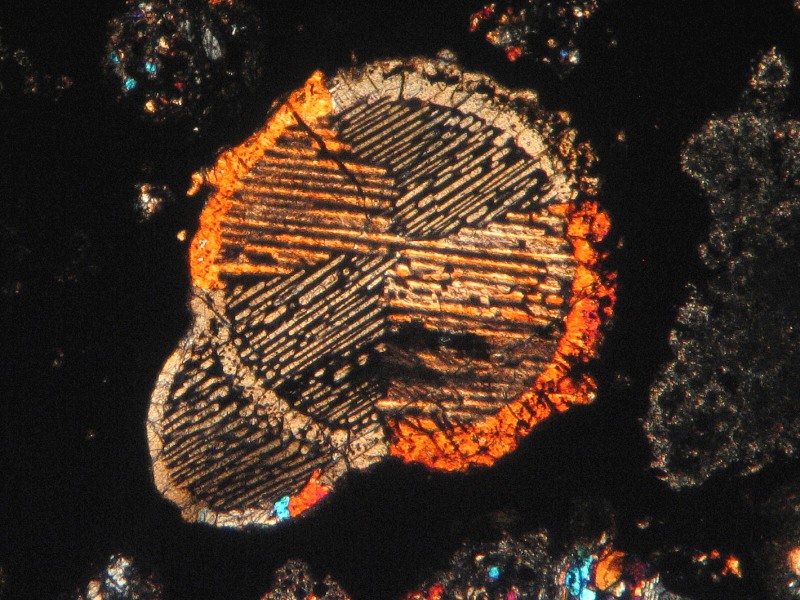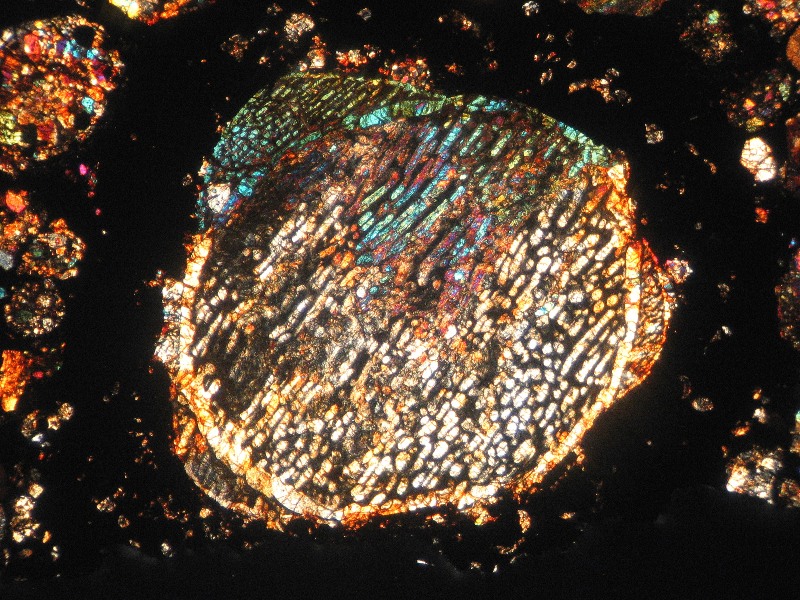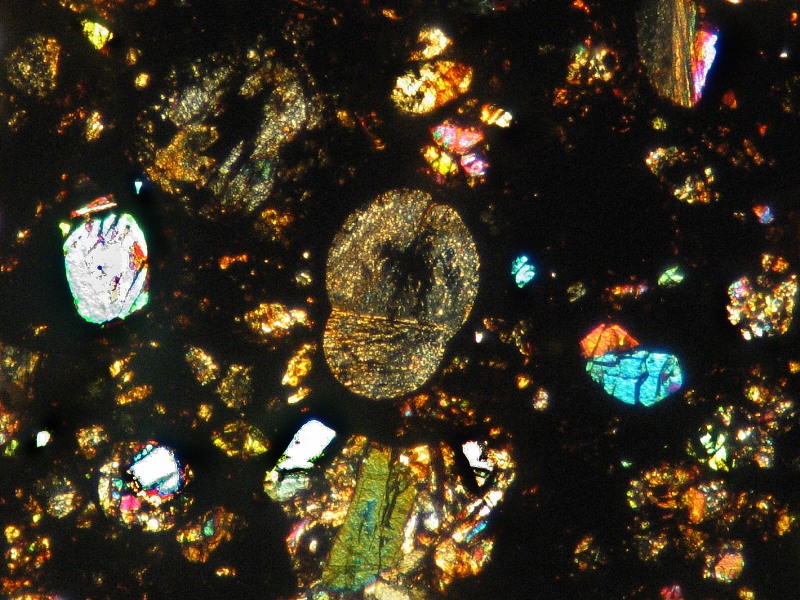
Compound Chondrules
Adhering Chondrules are those that became attached when a still plastic chondrule impacted and stuck to an already solid chondrule.
Sibling Compound Chondrules are adhering chondrules with similar textures and compositions.
Independent Compound Chondrules are adhering chondrules with different textures and compositions.
Enveloping Compound Chondrules have one or more chondrules completely enclosed in another.
This is a sibling compound chondrule. Both portions are barred olivine chondrules. The larger portion is a polysomatic barred olivine chondrule with a thick igneous rim. Roger Warin points out that the internal forms of the two portions and their optical continuity indicate that the smaller portion was fully molten in its position on the larger and that one of the lattices of the larger was the seed for the crystallization of the smaller. Note the thickness of the rim of the larger under the smaller compared to the rest of the rim of the larger. Click on this picture to see an animation of this chondrule on another page. Allende CV3
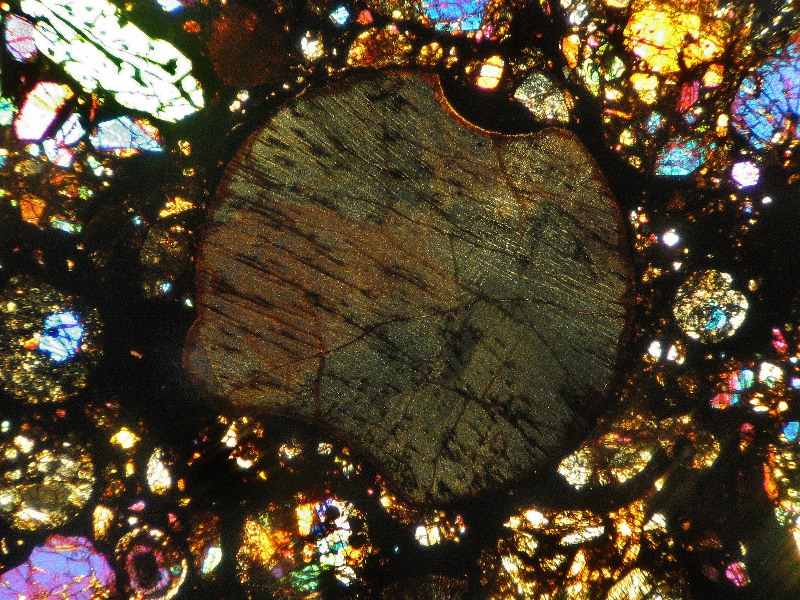
The "craters" seen on this chondrule might have been formed by solid chondrules hitting it but not sticking when it was still plastic. There is a small chondrule adhering the in the 8 o'clock position. NWA 3126 LL3.7
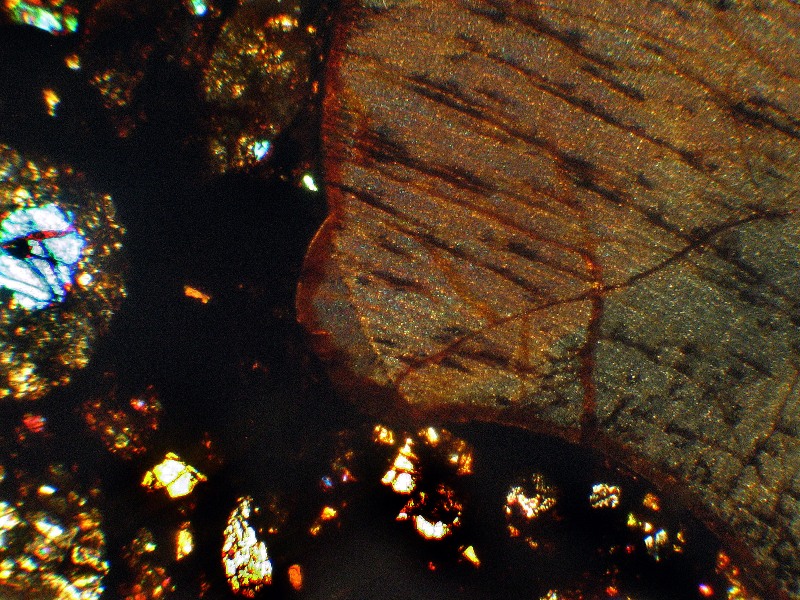
Among adhering chondrules there is a preponderance of barred and radial pyroxene/cryptocrystalline types. These cooled more rapidly than the porphyritic types.
Sometimes it's difficult to count how many are clumped together. Brownfield (1937) H3.6
Barred sibling compound chondrule. Dhofar 008 H/L 3.2/3.3
This sibling compound chondrule is rare in that both members were plastic when they met. Brownfield (1937) H3.6
